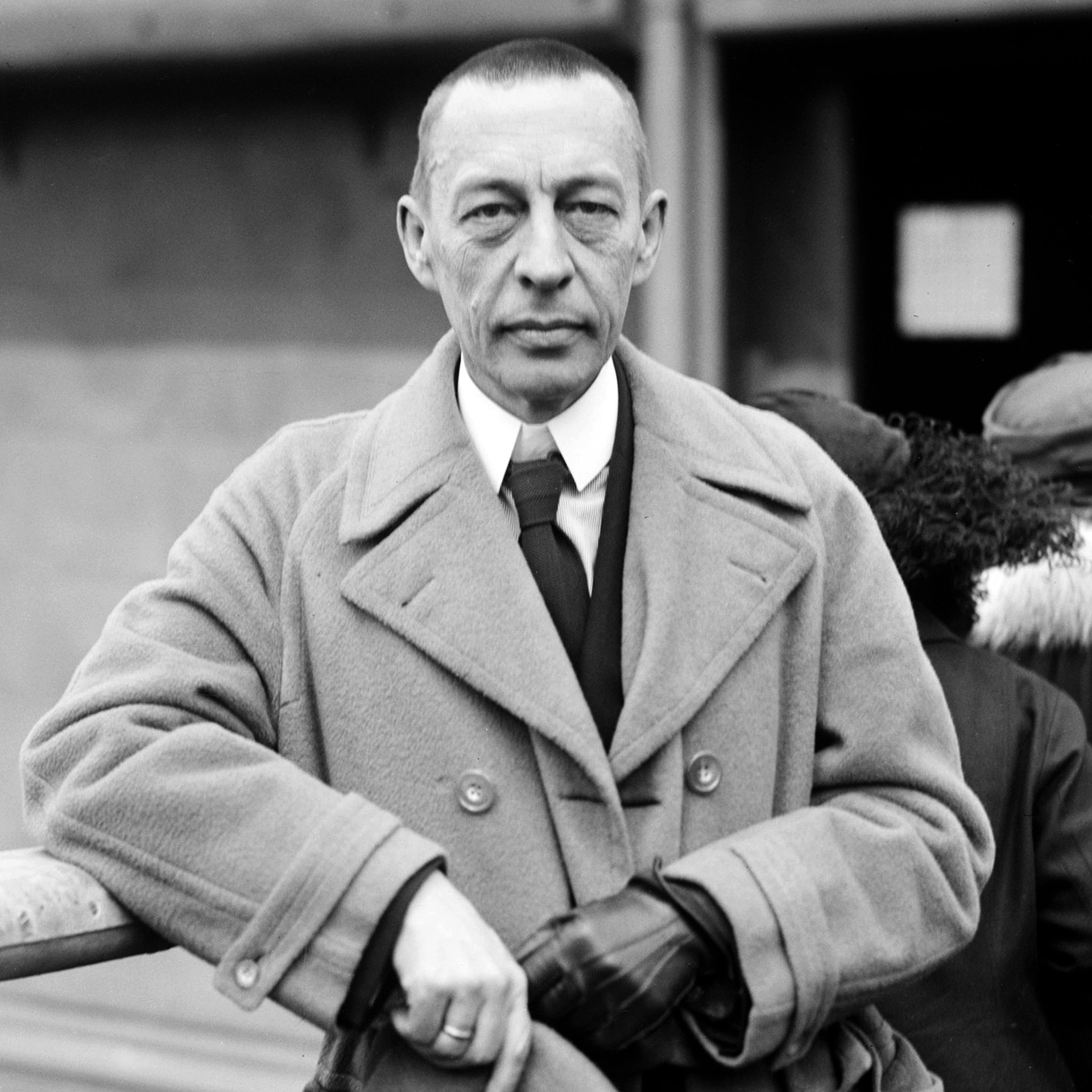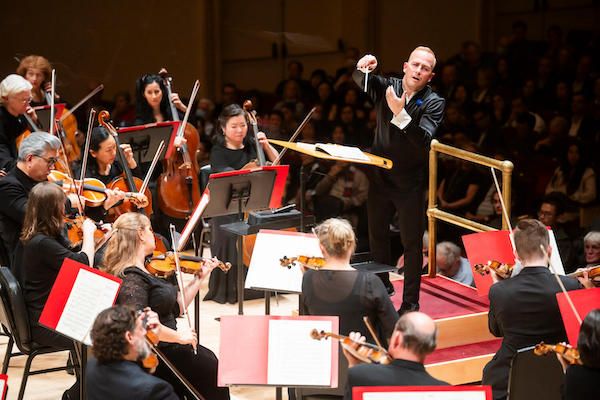Nézet-Séguin, Philadelphians deliver sumptuous Rachmaninoff at Carnegie

The 150th anniversary of Sergei Rachmaninoff’s birth is being celebrated worldwide by various artists, but in this country at least one wants especially to hear from the Philadelphia Orchestra.
This ensemble was Rachmaninoff’s symphonic muse in his later years—in concerts and on recordings—and its sumptuous sound has persisted through a succession of music directors since the composer’s first great collaborators, Leopold Stokowski and Eugene Ormandy.
The current occupant of the Philadelphia podium, Yannick Nézet-Séguin, having led a memorable Rachmaninoff concerto marathon in Carnegie Hall last January with pianist Yuja Wang, brought his band back to Carnegie Tuesday night with a normal-sized—and often thrilling–program of purely orchestral works.
It was the Philadelphians who, under Ormandy, gave the world premiere of Rachmaninoff’s last composition, Symphonic Dances. And it was their recording of the Third Symphony, led by the composer himself, that assured this unexpectedly modernistic work a place in the repertoire after it was coolly received in earlier performances.
In Tuesday’s program, Symphonic Dances was paired not with the Third but with the more unabashedly Romantic Second Symphony—somewhat to the latter’s disadvantage, since the crisp mastery of Dances called attention to the hour-long symphony’s meandering patches and occasional over-indebtedness to the young composer’s idol Tchaikovsky.
The program’s very traditional layout—symphony after intermission, concerto in the middle (Dances being sort of a concerto for orchestra)—called for a short opener, a slot filled Tuesday by Jennifer Higdon’s Fanfare Ritmico. Higdon, a Pulitzer- and Grammy-awarded composer long associated with this orchestra, has earned a spot on any Philadelphia program, but here she too was at a disadvantage–her clever, percussion-rich piece, for all its charm, came off as a shiny gadget compared to the soulful music that followed.
Premieres and performance history have conferred “ownership” of certain pieces on certain orchestras—think Dvořák’s “New World” Symphony and the New York Philharmonic, for example, or Bartók’s Concerto for Orchestra and the Boston Symphony Orchestra. Certainly Symphonic Dances and the Philadelphia Orchestra belong in that company, and the orchestra asserted its rights with muscle and flair Tuesday night.

The ensemble’s burnished sound gave depth and force to the slashing chords that opened the work, providing a strong foil to the glittering trumpet theme that followed, as well as the creamy, nostalgic alto saxophone solo. When the strings took up the sax theme, one heard a hundred years of Philadelphia tradition, dating back to the Stokowski era, in their silken tone.
Those strings added a layer of soul to the ironic waltz movement, with its acidic muted brass and exquisite solos, performed by the orchestra’s first associate concertmaster Juliette Kang and English hornist Elizabeth Starr Masoudnia. In this eventful movement, and in the first movement’s thumping climaxes, one was particularly aware of conductor Nézet-Séguin’s artful creation of “moments” at the expense of the long arc of the piece. With this orchestra, those moments were lovely, but more continuity was needed to give the music overall shape and direction.
Happily, the Allegro vivace finale traded moments for momentum, and a welcome alternation of thick and thin sonorities got this orchestra off its default setting of lush, blended sound. (But the strings still made the floor shake in their slow episode.) Nézet-Séguin seemed to delight in showing that his Cadillac of an orchestra could take the corners fast, and accelerate down the straightaway to an exciting coda.
Just as the 30-year-old Rachmaninoff had to take leave of his tuneful concerto successes to tackle the architectural challenges of a symphony, so Tuesday’s program found a steeper interpretive mountain to climb in the Second Symphony. Not just Tchaikovsky but Mozart, Beethoven, and Schumann—the “trending” composers of Rachmaninoff’s student days—were looking over the composer’s shoulder as he poured ideas and developments into this lengthy work.
The composer himself and subsequent conductors, fearful of trying the audience’s patience, used to perform this symphony with deforming cuts, a practice now fortunately abandoned. And yet there were moments on Tuesday when one found oneself wishing for a snip here and there, as Nézet-Séguin molded some tiny interaction of a few instruments, or lingered to admire some detail, and the piece seemed to lose the way on its long journey.
The conductor also seemed distracted by the sex appeal of his marvelous orchestra—the massive sonorities, the pliable strings, the pinpoint coordination. It would have worked better, for example, to gauge the climaxes in steps rather than dial each one up to eleven. Ripe “hairpin” swells in strings are expressive, but they tire the ear when repeated over and over. Used sparingly, the boom of timpani and bass drum and the tsunami of double basses are wonderful things, but on Tuesday the conductor’s enthusiastic summoning of them made the texture too thick in places.
Once again an Allegro molto saved the day, as the symphony’s scherzo-like second movement flashed and scampered, a little rushed but smartly executed. The strings got to show their sparky side, chattering under the first theme and firing off a scintillating fugato in the trio.
The symphony’s two middle movements are the most Rachmaninoffian, the biting scherzo followed by the endless love song of the Adagio. Keeping the latter afloat was the challenge on Tuesday, as one imagined the lover losing patience while Nézet-Séguin admired his own interpretive eloquence instead of pressing his case. (But oh, those strings.)
There were echoes of Tchaikovsky’s Fourth all over the finale, as it brought back the symphony’s fateful motto theme for its dénouement amid a frantic folk dance. Nézet-Séguin took his fast machine for a joyride, more of a sprint than a dance, speeding through the strings’ lovely, arching second theme. But a hushed development section seemed to settle the performance down, and the themes returned steadier and with more natural verve, leading to a rewarding payoff in the coda–a fine conclusion to the Philadelphians’ Carnegie Hall tribute to their forever composer-in-residence.
Carnegie Hall presents the Philadelphia Orchestra, conducted by Yannick Nézet-Séguin with the Marcus Roberts Trio, performing works by Stravinsky, Weill, and Gershwin 8 p.m. January 23, 2024. carnegiehall.org